Maladjusted, Part I: 21st-Century Attack
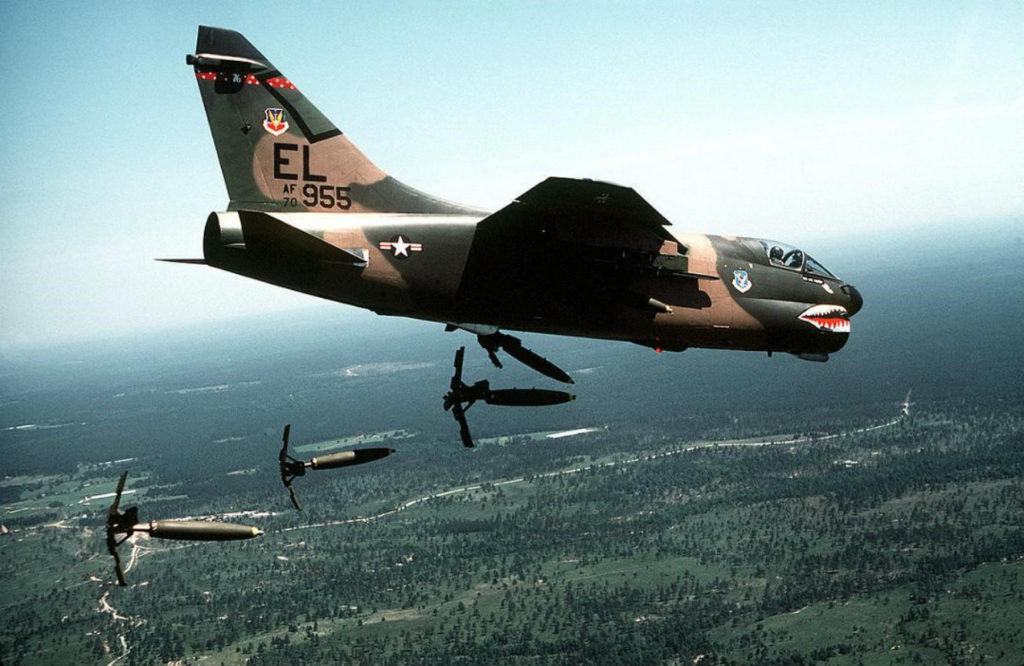
Once upon a time, the Air Force was flush with attack aircraft. Late in the 20th century, the Air Force maintained large numbers of attack aircraft, peaking in 1983 with a total inventory of 1,115 attack aircraft in three different models. Today, most mentions of the attack aircraft relate only to the A-10 Warthog, and underappreciated aircraft perennially in danger of retirement. Even among Air Force officers who should know better, the A-10 is referred to as a close air support (CAS) aircraft, discounting the myriad other roles that the aircraft has performed. Attack aircraft are the elderly second cousin at the Air Force dinner table, rarely spoken of and relegated to the status of historical relic, banished even from the official Joint Dictionary. This unfortunate condition makes it exceedingly difficult to discuss the utility, role, and historical contribution of attack aircraft to combat airpower. And it makes it especially difficult to discuss the most critical aspect of all — the Air Force needs to bring them back.
History
Historically, attack aircraft were distinct. They were dedicated to the ground attack mission, focused on attacking things on the surface of the planet. Unlike fighters, they were not intended to mix it up with other aircraft. They were also not expected to haul large bombloads over long distances, which was the purview of the bomber. As attack aircraft numbers shrank, their classification fell into disuse. It is possible to look it up — because the Department of Defense has to have a regulation for everything — under AFI 16-401, which is also Army Regulation 70-50 and NAVAIRINST 13100.16, titled Designating and Naming Aerospace Vehicles
These regulations use the following definitions:
A (Attack) — Aircraft modified to find, attack, and destroy enemy targets using conventional or special weapons. This symbol also describes aircraft used for interdiction and close air support missions.
B (Bomber) — Aircraft designed for bombing enemy targets.
F (Fighter) — Aircraft designed to intercept and destroy other aircraft or missiles. Includes multipurpose aircraft also designed for ground support missions such as interdiction and close air support.
This is a clear, but indistinct articulation of the mission classification, because the definitions for fighter and attack share an identical second line. And therein lies the conundrum. When all fighters became fighter-bombers, the niche formerly occupied by attack aircraft became even less distinct. The expanding capabilities of multirole fighters such as the F-4 Phantom presaged the death of the attack aircraft: why purchase an attack aircraft to attack ground targets when you could purchase a fighter-bomber that could attack ground targets and shoot down other aircraft? That very argument is what killed the A-7F Corsair III, a supersonic attack aircraft that found itself competing unsuccessfully with the multirole F-16A. So, to return the attack aircraft to its proper niche, we need to define it. Here is my proposition:
An attack aircraft is a multirole combat aircraft that performs tactical counter-land and surface attack missions but is not intended to perform counter-air missions against airborne enemy aircraft.
Defining the aircraft is one short step toward justifying it. But why on earth would anyone want a combat aircraft that doesn’t shoot down other aircraft?
Tradeoffs: Cost and Capability
One Word. Cost.
Air-to-air capability does not come cheaply. You pay for it either with higher unit cost or design tradeoffs — or both. In 1971, the Air Force reported to the Senate Armed Services Committee that an A-7D attack aircraft had a unit flyaway cost of $2.6 million compared to $2.5 million for the multirole F-4E, but that the A-7 had “twice the range and loiter time while carrying a 25% greater bombload.” In that same year, the Navy was paying $2.4 million for an A-7E attack aircraft and a whopping $13.1 million for early F-14A fleet defense fighter. Baselined again in 1985 dollars, the flyaway cost for the attack aircraft produced in the 1970s was significantly cheaper than for their fighter counterparts, including fighter counterparts like the F-105 and F-106, built decades earlier.
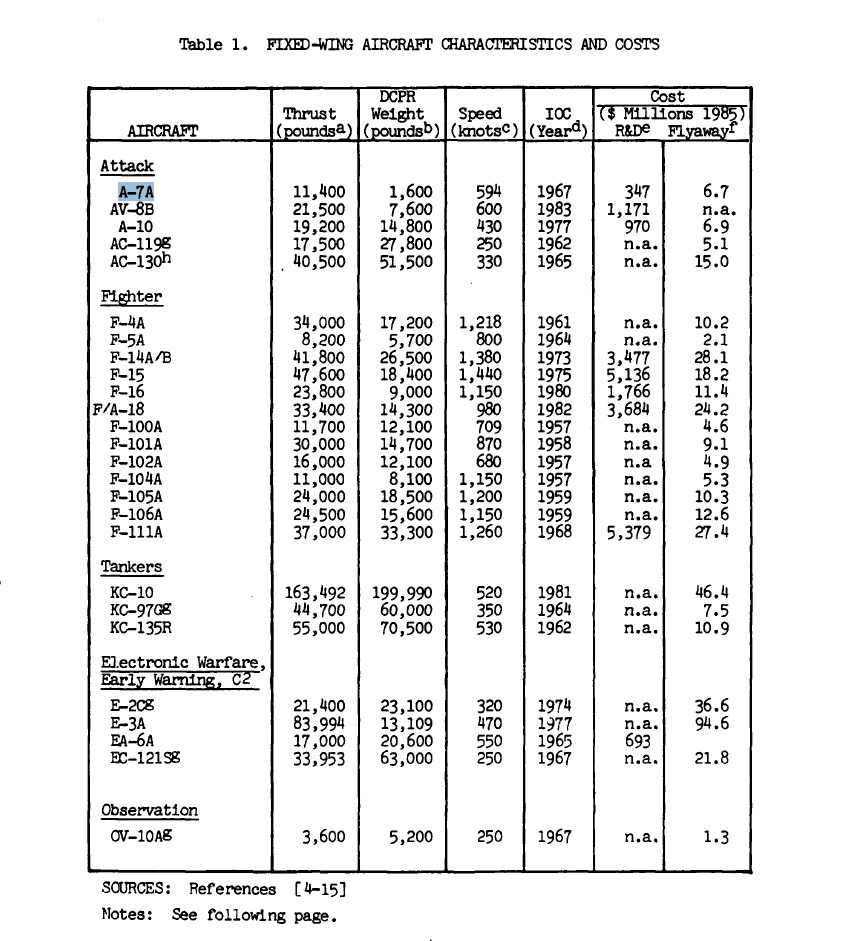
One reason for the cost differential is obvious: The purchaser doesn’t pay for systems (for example, air-to-air radars) that aren’t on the airplane. What you don’t need, you don’t have to test, buy, maintain, or upgrade. Cost savings made from design tradeoffs are less obvious. The A-10’s design philosophy focused on responsiveness, lethality, survivability, and simplicity. This allowed the Air Force to avoid cost drivers such as high aerodynamic performance. The Hog’s design tradeoffs sacrificed speed for lethality and survivability; its slow speed was a feature, not a bug. In the now almost-forgotten 1974 fly-off between the A-7D and the YA-10, the A-10 had several times the endurance of the faster jet and could operate under weather ceilings where A-7 pilots dared not go.
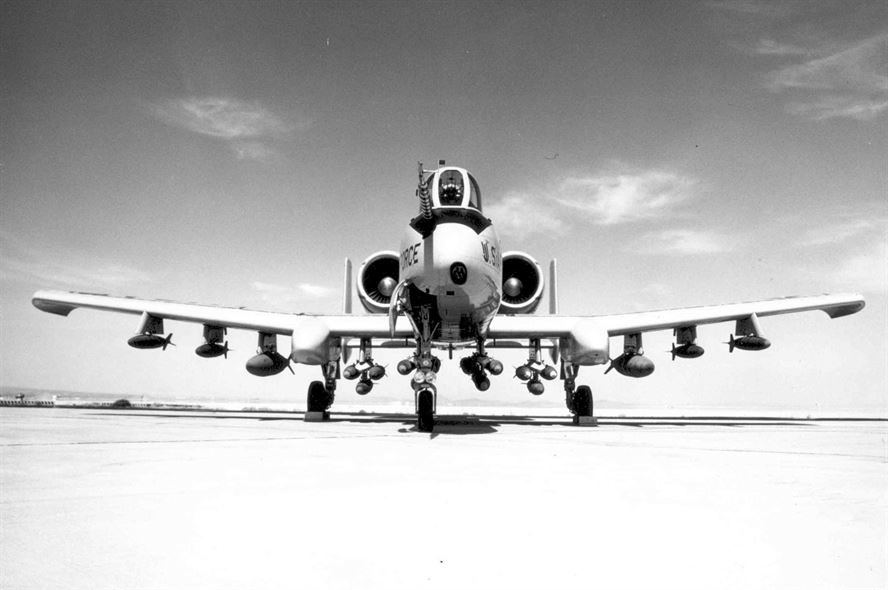
But that’s not the only reason why the Air Force might not want a combat aircraft that doesn’t shoot down other aircraft. It also comes down to capability. In a service that always seeks to fly higher and faster, the benefits of building aircraft without the air-to-air baggage have been forgotten. There are other attributes that might be desirable in an attack aircraft that cannot be designed into a high-performance air-to-air machine. For example: The OV-10 Bronco, which the Navy used as a light attack bird, was designed to take off from and land on roads. It could carry and drop three parachutists from the back. The A-7D could carry more bombs than the Phantom, further, and just as fast, while hugging the terrain on the way. The A-37 Dragonfly had screens to protect its engine from debris, was easy to maintain, and could swap out an engine in an hour.
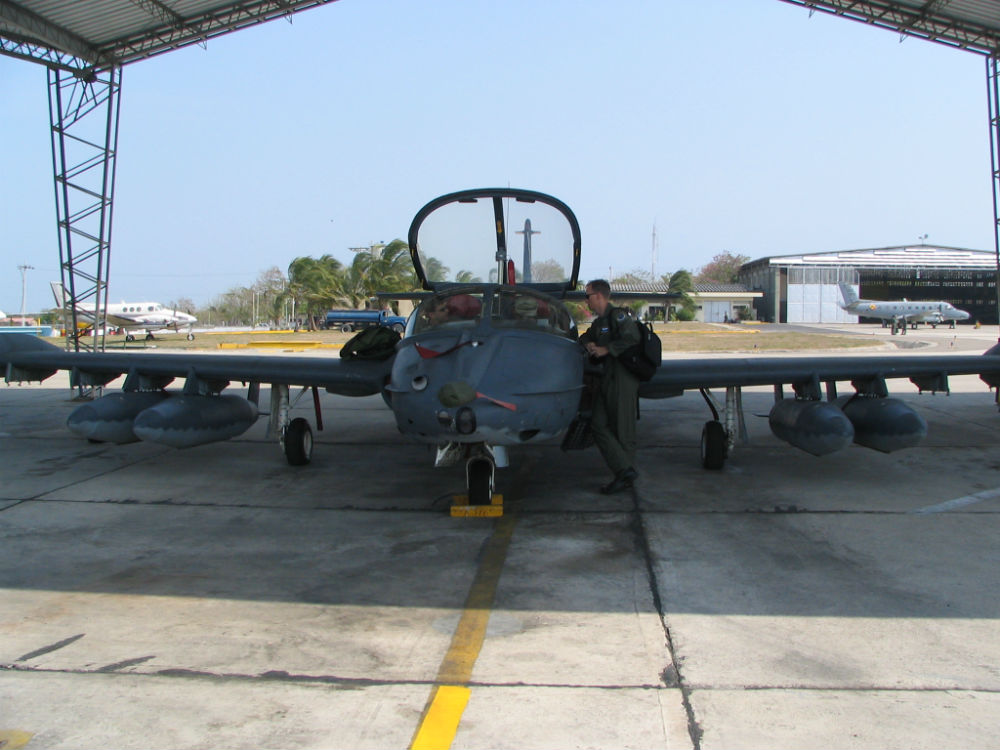
The Air Commando versions of the A-26 could carry 12,000 lb. of ordnance (more than twice that of the B-25 bomber) including the ammunition for 8 forward firing guns, and deliver it all from a 30- degree dive.
The Long Game
The fight against non-state militant groups is not going away. The Air Force cannot look ahead and say with confidence that it will no longer be involved in the kind of air operations that have defined the last 15 years. And for almost 100 percent of the post-9/11 air operations, air-to-air capability has just been along for the ride. All of the investment in air-to-air design features are useful for finding the tanker when the weather is bad and for avoiding traffic, but not for guiding air-to-air missiles to a hostile aircraft or outmaneuvering enemy fighters. In the skies over Iraq, Afghanistan, and sundry other nations plagued by violent extremists, the aircraft we continue to use are a ridiculous overmatch for the missions we need them for. This method of operations comes at a high cost in premature aging among the U.S. legacy fighter fleet.
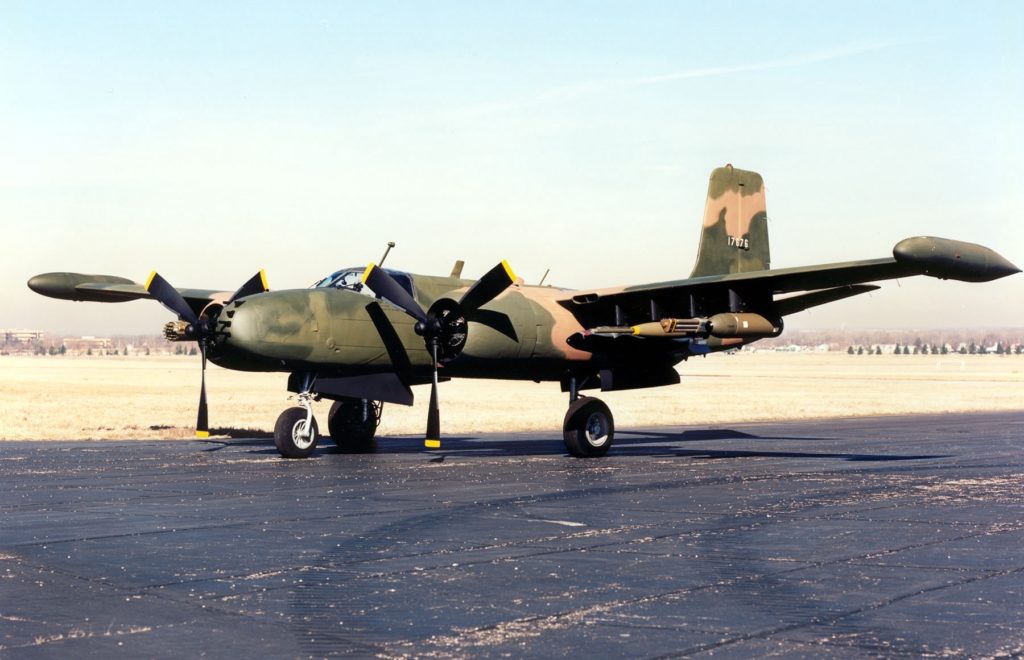
Why does this continue? The answer is simple: We have no other aircraft to use. The U.S. military put flight hours on fighter aircraft because they were capable of doing the mission, not because they were well-suited to the mission, and certainly not because they were the most cost-effective choice. In fact, the only way to make the fighter option less cost-effective would be to use the F-35. The sole focus on expensive multirole aircraft carries with it significant collateral damage on training, readiness, and the industrial base.
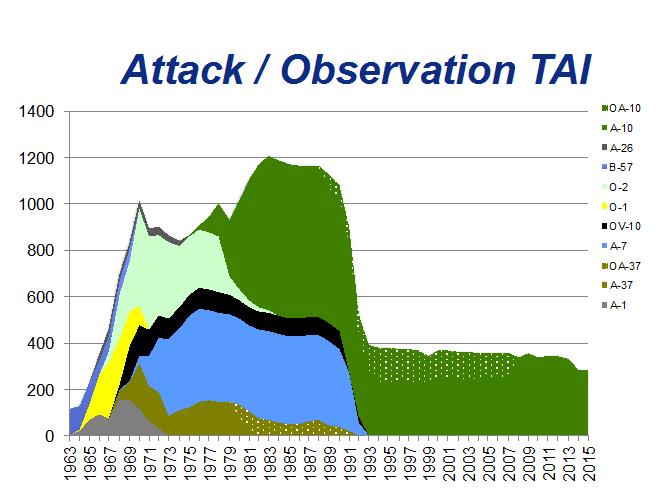
The post-Gulf drawdown demolished the Air Force’s attack aircraft inventory, and the portion of the industrial base that should have been building attack aircraft is moribund. It’s a minor miracle that the F-15E and F-16 production lines are still open, and only because they have been entirely sustained by foreign sales for 15 years. In the process, the United States lost the ability to produce aircraft suitable for partners with smaller budgets and limited airpower capabilities. If you cannot afford an F-16, you’re not going to be shopping for a U.S. combat aircraft. With the loss of the lower-end fighter/attack market comes a loss of ability to build partnerships and support foreign aviation capabilities.
It also means that the workforce that builds and equips combat aircraft is smaller and much less redundant than it should be. In 1956, the United States had six open production lines producing fighter and interceptor aircraft — a healthy and competitive market. By 1966, this was down to five. 1976, four. Every ten years, the United States lost a production line and often an aviation company until 2006, when there was only one production line open and only one company (Lockheed Martin) producing fighters for the Air Force. Boeing produces fighters for the Navy and for foreign F-15 customers, and Northrop hasn’t built a fighter since the YF-23, 25 years ago.
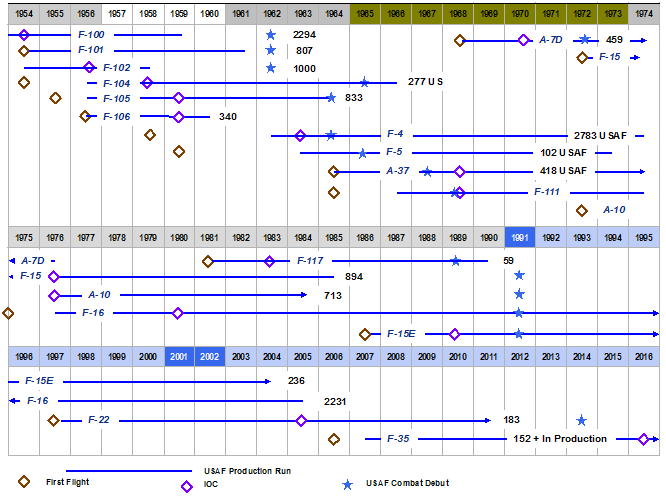
Attack!
The shortage of combat aircraft is substantial, pervasive, and it has an impact on warfighting potential, pilot inventory, readiness, and the industrial base. A vision of exactly how bad is can get is easy to find: Look no further than the Marine Corps’ fighter/attack enterprise – where two thirds of its fighters are regularly grounded -to see a real-time example of how failure to recapitalize and a high operations tempo can shatter a force. Replacing the F-18 and AV-8 with an aircraft that costs more to buy, fly, and maintain is not a recipe for success in an environment where the ops tempo remains high, year after year. The Air Force has a solution to many of its tactical aviation woes, and it’s one that we have used before — returning to a high/-low mix of aircraft. But while the term is often tied explicitly to the F-15/F-16 purchases of the 1970s, it could apply today in terms of aircraft roles rather than aircraft models. Leave the high-end fight to the fighter/bomber aircraft. There is plenty of room for attack aircraft in the wars we have actually been fighting for 25 years. In the Vietnam Era, the United States solved a great number of tactical aviation shortfalls with the introduction of attack aircraft tailored for the war it actually fighting instead of the wars it expected to fight. The United States can do this again. Twenty-five years after America gave away all of its attack aircraft except for the A-10, it’s time to bring some new aircraft home to roost.
Col. Mike “Starbaby” Pietrucha was an instructor electronic warfare officer in the F-4G Wild Weasel and the F-15E Strike Eagle, amassing 156 combat missions over Iraq and the Former Republic of Yugoslavia and taking part in 2.5 SAM kills over 10 combat deployments. As an irregular warfare operations officer, Colonel Pietrucha has two additional combat deployments in the company of US Army infantry, combat engineer, and military police units in Iraq and Afghanistan. The views expressed are those of the author and do not necessarily reflect the official policy or position of the Department of the Air Force or the U.S. government.
Image: U.S. Air Force photo by TSgt Frank Garzelnick

